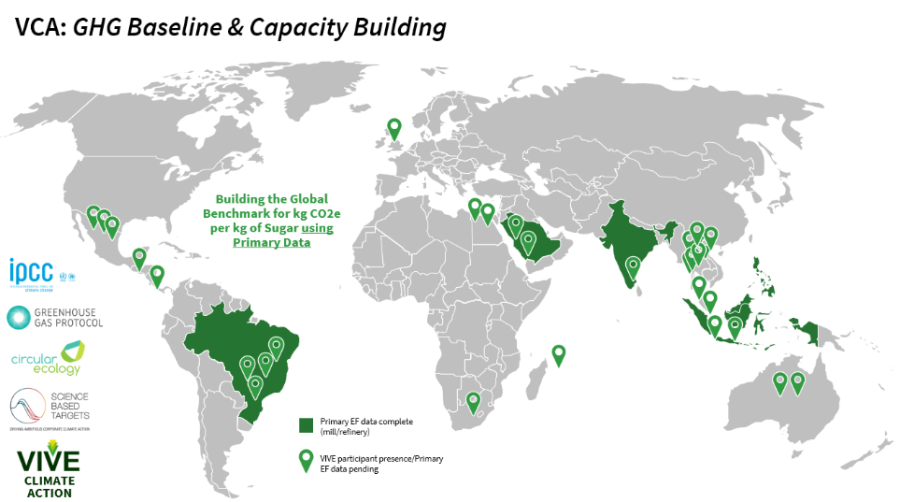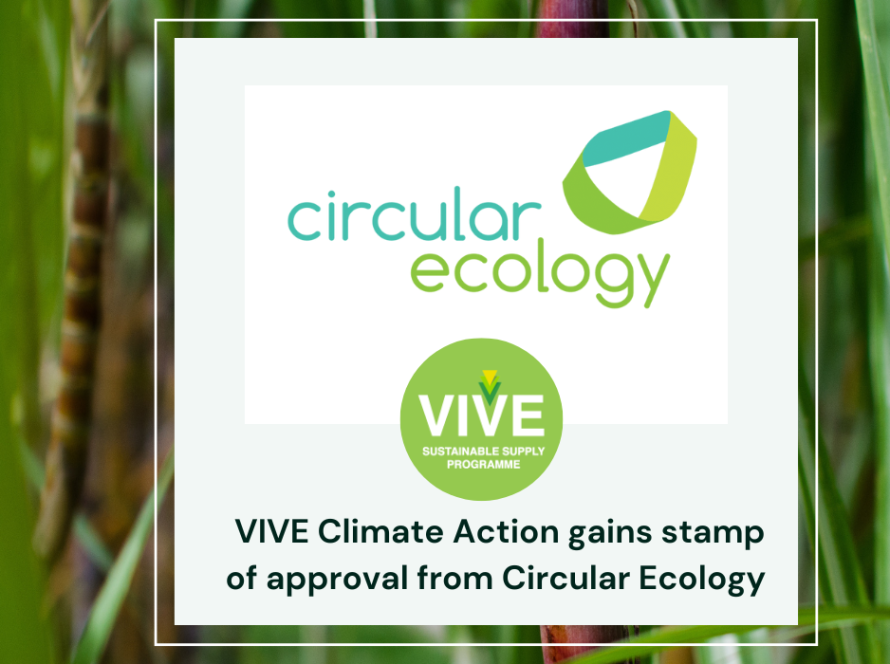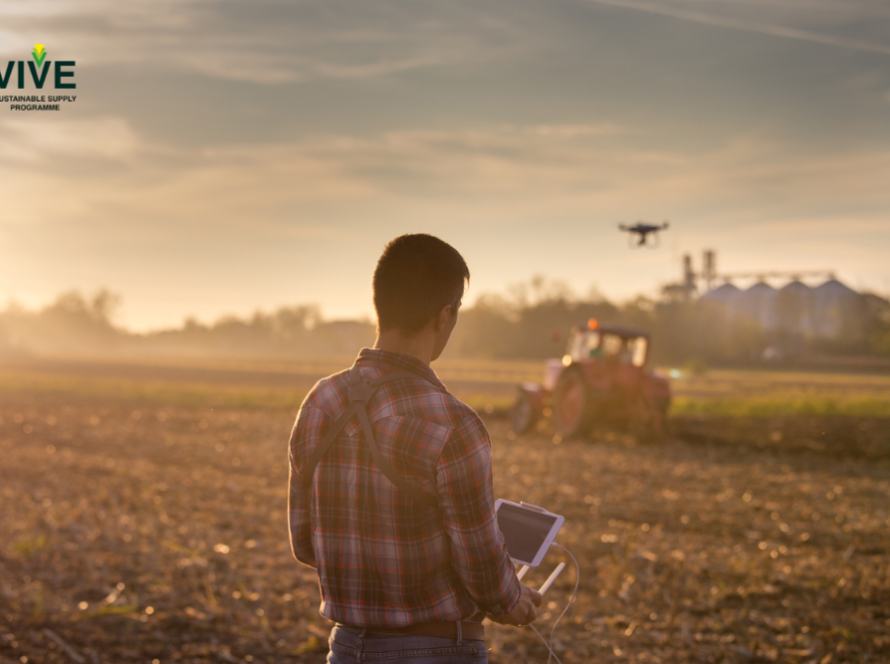VIVE is redefining the global baseline for sugarcane emissions — powered by real, primary data from the ground up.
2024 marked the launch of VIVE Climate Action (VCA) – The VIVE Programme’s stand-alone tool for GHG emissions quantification across farm and facility operations. Using VCA, the VIVE team has collaborated closely with VIVE participants, in 10 different countries to capture their initial primary data driven GHG baselines. The new decarbonisation solution, aligned to the GHG Protocol, has been designed to create carbon transparency, for food & beverage (F&B) raw material supply chains and inform identification and prioritisation of opportunities and partnerships for supply chain decarbonisation. In turn, this will allow F&B multinational companies to make carbon reductions within their supply chains through carbon ‘insetting’ (reducing emissions through interventions within their own value chain), without reliance on carbon offsetting or estimates.
In Q4 of this year, the team have completed of a new round of emission factor (EF) calculations for global VIVE sugar production—spanning refined sugar, raw sugar, and sugarcane—across the Philippines, Saudi Arabia, Malaysia, and Brazil. The results reveal striking differences to the figures provided in secondary databases currently utilised by many companies for their carbon baselines. In all cases to date, the VCA results using primary data, provide significantly lower emissions factors than previously reported alongside insights on the best return on investment for future decarbonisation efforts. This provides a powerful reminder of how accurate, on-the-ground data is critical for both credible carbon reporting and smarter supply chain investment decisions.

This growing dataset deepens our understanding of carbon footprints across diverse agricultural landscapes and supports more meaningful conversations with supply chain partners to drive climate action.
Although VCA has started with sugarcane, we have the capacity to conduct this for any agricultural crop – providing full visibility across global F&B multi-commodity supply chains. In 2026, we plan to utilise VCA across a wider portfolio of products.
The Role of Primary Data
Unlike secondary data, which relies on regional averages, primary data reflects the actual practices, inputs, and outcomes of farms and production sites. Collecting this data enables a more accurate representation of emissions, tailored to specific geographies, crops, and farming methods.
When we launched VIVE Climate Action, our key motivation was to provide carbon transparency in commodity supply chains and support our MNC clients in F&B industries to achieve their climate commitments. Since then, we have been on a learning journey alongside VIVE participants, with the conclusion that using statistical data alone to calculate baselines, set targets and develop decarbonisation strategies is unfit for purpose, and while primary data does not immediately enable a reduction in emissions to be claimed, the re-baselining of emissions better reflects reality and enables more informed strategic sourcing decisions to be made.
With robust primary data, supply chain stakeholders can move beyond generalised assumptions toward evidence-based action—targeting interventions that truly matter and recognising farmers for sustainable practices already in place.
Looking Ahead
The momentum to build full emissions transparency across VIVE verified supply chains continues. Next, we are turning our attention to Thailand, Egypt, and South Africa, continuing our effort to build a truly global picture of sugar-sector emissions—one grounded in real data, not assumptions.
Going forward, VCA efforts are focused across 3 core areas:
- First, we are scaling data collection across all existing VIVE participants, and collaborating to increase the granularity of the data collected to further strengthen the insights.
- Second, we will leverage insights from the VCA baselines to scope and co-design decarbonisation roadmaps that simultaneously support strengthening of supply resilience. In parallel, we will also be working with participants and buyers to build out a new ‘VCA only’ offering where we can go beyond VIVE participants to capture full emissions baselines across key buyer commodities and geographies.
- Finally, we will broaden the scope of VCA’s utility to support a multi-commodity framework, enabling the delivery of value across a more diverse portfolio of products.
The key to success across each of these areas is ensuring capability is internalised across the supply chain. In the first year of full-scale VCA implementation, we identified that participants are in different phases of their journey towards decarbonisation and climate resilience. Relevant upskilling and resource provision is therefore crucial to ensure consistent and repeatable data going forward.
Keeping the end goal in mind is critical for meaningful progress. Through this framing, VCA carbon transparency is simply a tool to enable effective prioritisation, co-design and implementation of context-based, decarbonisation initiatives, which provide value to all supply chain stakeholders and strengthen supply resilience.
By embracing transparency, we are transforming data into action—and action into impact.




